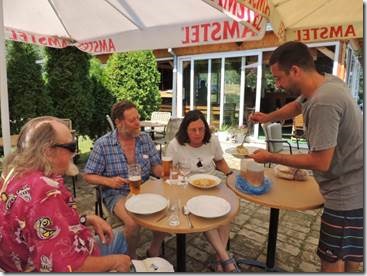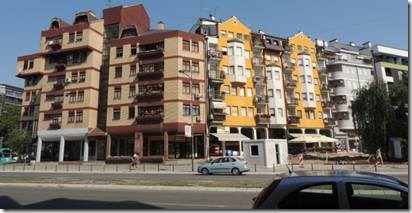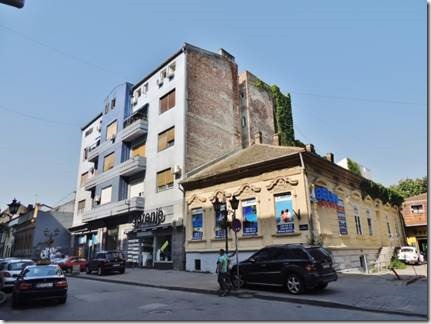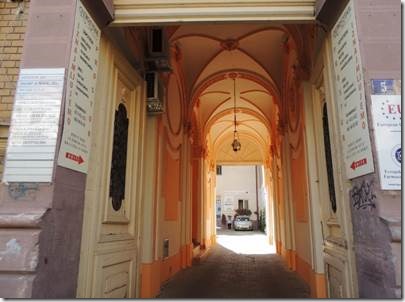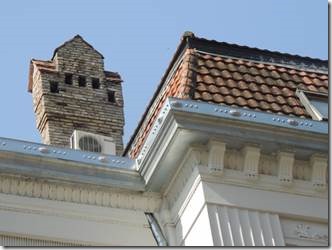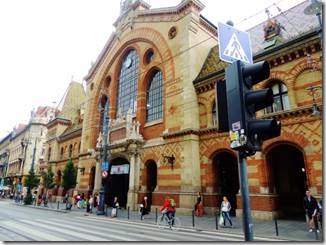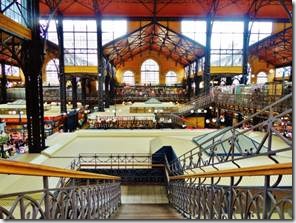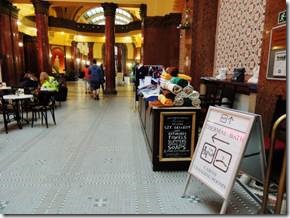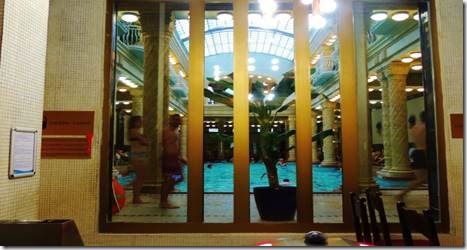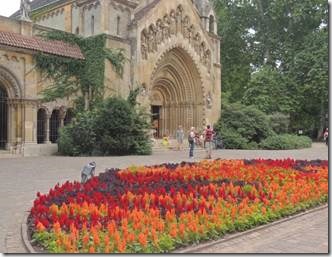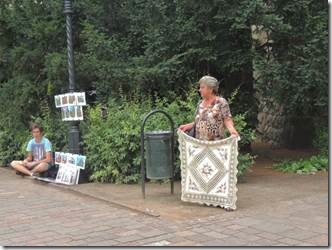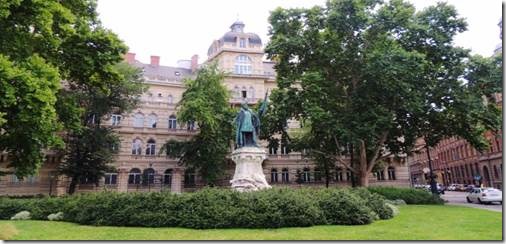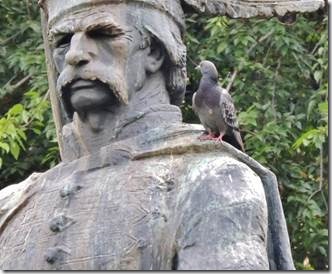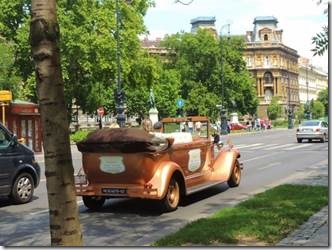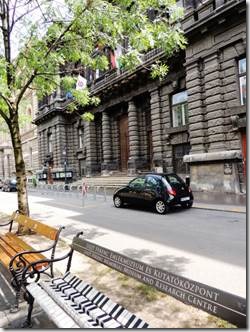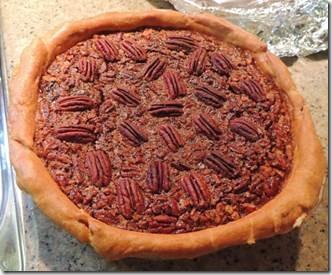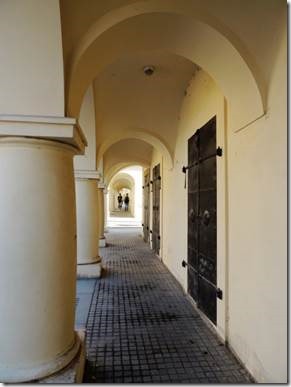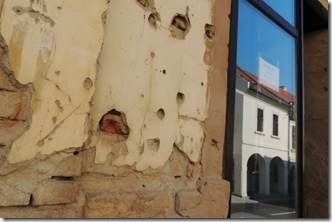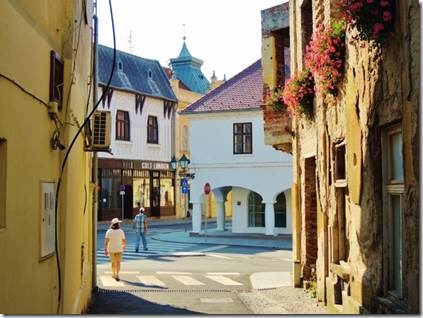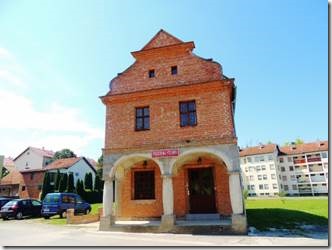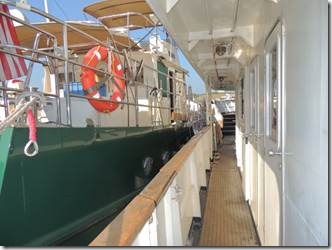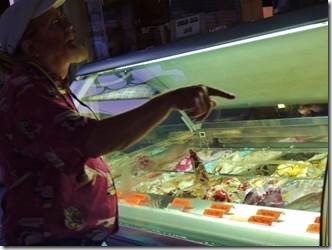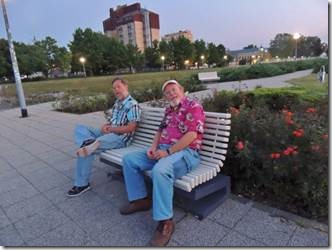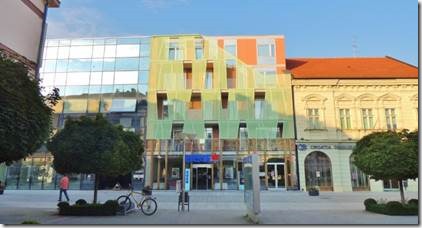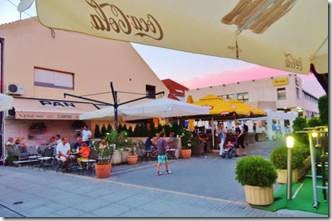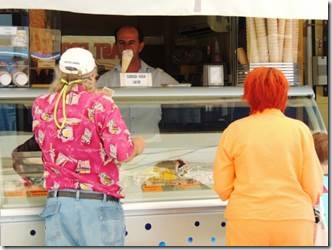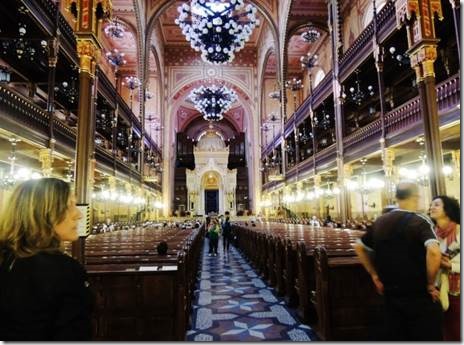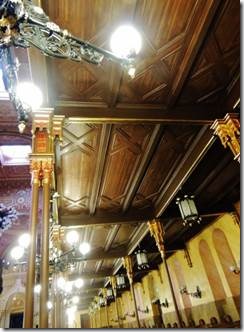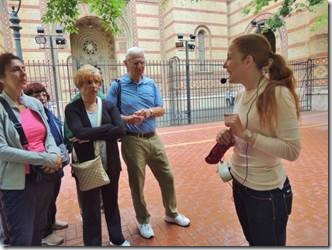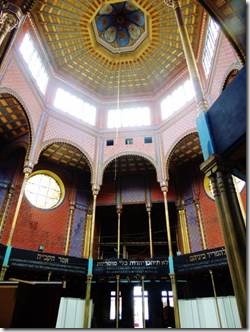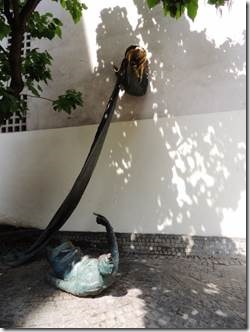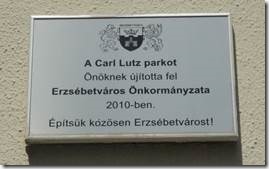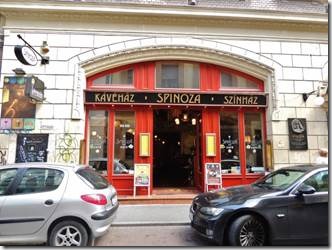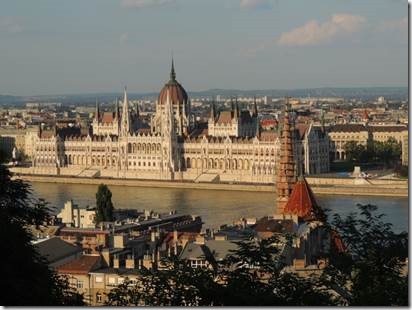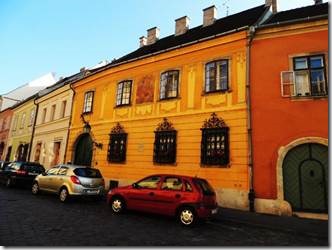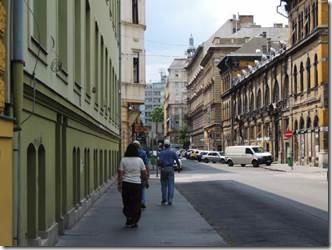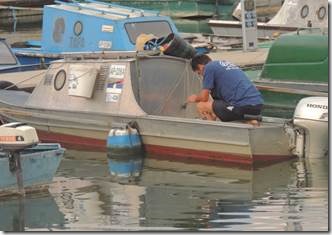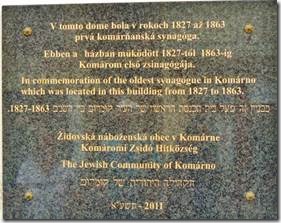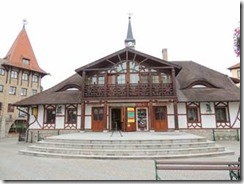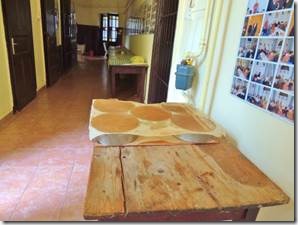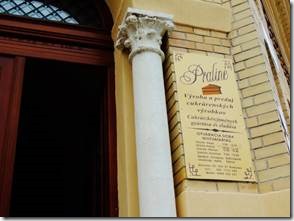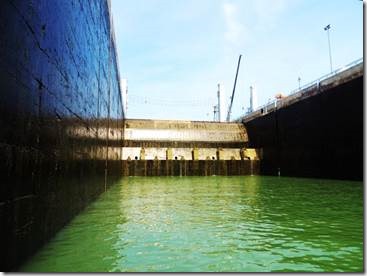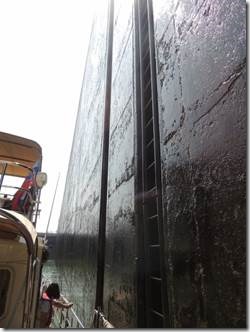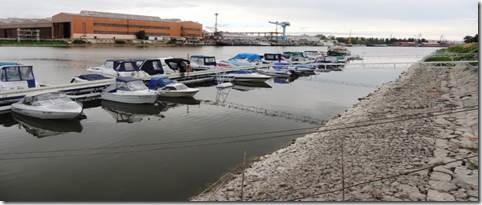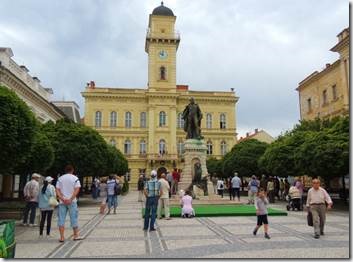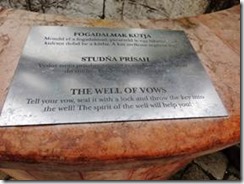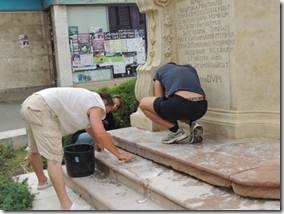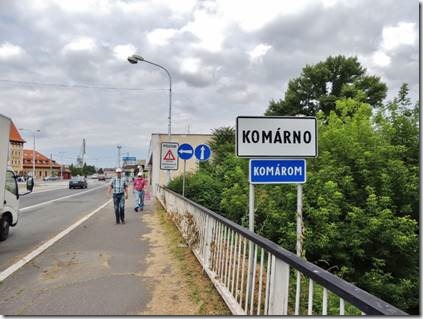Vidin, Bulgaria
Здравей zdraveĭ = hello in Bulgarian
Yesterday we checked out from Serbia and checked into Bulgaria. I must say that Serbia was a lovely country to visit and you should put it on your list of places you’d never have thought of for a vacation.
http://cruisingtips.net/maps/wheresdoramac.php is the link to follow the route in case you didn’t get that info or lost the link. Rick updates it pretty frequently when internet is available.
Today we’ll explore the port town of Vidin though it does look a bit like rain just now at 6:18 am here in Bulgaria. After several long days and some sleepless nights thanks to music blared from restaurants on the Danube ( a favored location for restaurants and night clubs) I was asleep before 9 PM last night. But we’re all pretty early morning risers. A huge cruise ship just zoomed by and the giant wake is causing us to rock and roll much more than any other has done. We’re tied up to a restaurant barge on the river but thankfully no loud music last night; just the sound of the lines moaning because the swift current makes us rock constantly, but gently.
This email is part 1 of 3 about Novi Sad, the second largest city in Serbia. http://www.pbs.org/wgbh/pages/frontline/shows/kosovo/etc/cron.html is a PBS Frontline timeline. “
Although bombing did not begin until March 24, 1999, NATO’s path to war in Kosovo wound its way through much of the region’s troubled recent history.
The following chronology traces the roots of the war in Kosovo from Slobodan Milosevic’s rise to power in the late 1980s and through the diplomatic gambles and military threats that failed to head off the conflict. It charts the escalation of the air war with Serbia and the steps that finally led to NATO’s victory in early June 1999.” Novi Sad had three bridges crossing the Danube; all were destroyed in the bombing. Today they have been rebuilt with a 4th added.
Ru
|
George’s Yacht Club at the far end on the small inlet off the Danube. DoraMac is underlined in red. Again you can see that most boats used on the river are smaller so have less problem finding places to tie up. George, who is a lawyer by profession, creates small marinas as his hobby. This one is just in the mid stage of development. George ordered dinner for us from a favorite restaurant with traditional Serbian food. Mashed small sardines with sour cream and lemon wedges and great bread were the snack to hold us until the massive dinner arrived. George serving dinner Matzo Ball Soup..or it tasted that way to me. It would have been enough but was only the beginning. We had baked chicken and meat and potatoes and carrots and 3 different sauces. We had enough left over from the soup and bread and sauces to use for days. Kids were diving off the large concrete structure so Randal threw them some Frisbees to play with. |
|
We walked into town early the next morning to be back before the mid-afternoon heat. Novi Sad is the second largest city in Serbia. Novi Sad “At km 1225 (on the Danube ) this is the principal town of Vojvodina, the granary of former Yugoslavia. Founded at the end of the 17th century by Serbs fleeing from the Turks, Novi Sad was declared a royal free city in 1748. A century later the Hungarians virtually razed it to the ground. In the 19th century the town was a cultural and intellectual focus for the Serbs within the Austro-Hungarian empire when it became known as, yet another, Athens of the North. Architecturally Novi Sad offers little of interest, but it does have the Voivodine Museum and an art gallery with an extensive collection of paintings. In 1999 the three bridges of Novi Sad were destroyed by NATO bombs; since then they have all been replaces; the last, the Sloboda “Liberty” Bridge was completed in 2005.” JPM Danube Guide Serbia had Tito so not Stalin and later Soviet communism. I’m not sure if that impacted the more recent architecture and if that meant less destruction of older 19th century buildings. Interesting question. More “modern” architecture. |
|
This building reminded me of buildings we saw in Tel Aviv, only a more modern version. |
|
ET was calling Randal or rather Randel |
|
I love archways and court yards. The woman in the tourist office said these apartments were expensive being near the old town area. |
|
Architectural details |
|
Just around the corner is the Synagogue, donated by the Jewish community to Novi Sad to be used as a venue for cultural entertainment but also used as a synagogue for major Jewish holidays or events. The tourist office had a lovely brochure about the Jewish community with history and photos of places and important people but only Serbian language copies were available. “Theatre Square adjoins Jevrejska street with its complex of buildings comprising the Synagogue, the Ballet School and the Jewish Community building, which together serve as a reminder of Novi Sad’s large Jewish community which suffered greatly during the Second World War. The Synagogue, with its imposing structure and sheer size, is amongst the largest synagogues in Central Europe. The Synagogue was built in the shape of a triple-nave basilica with a 13-metre wide and 40-metre high dome. The building was finished in 1909, designed by architect Lipót Baumhorn. All three buildings – the Synagogue, the Ballet School and the Jewish Community building, were built of yellow brick, while more than 300 m2 of decorative stained glass was incorporated into the Synagogue. In 1991, the Jewish community donated the Synagogue to the city to be used exclusively for musical performances.” |
NOVI SAD Ujvidek [Újvidék] (Hungarian); Neusatz (German)
“Located on the banks of the Danube, Novi Sad, the capital of the Vojvodina, was founded in 1694 by the Austrians to protect a key bridge across the Danube from the Turks. Jewish presence here is first recorded in 1699. By the eve of World War II, more than 4,000 Jews lived in the city. About 1,200 survived and today the city has the second lagest Jewish comunity in Serbia.
Synagogue
11 Jevrejska ulica
The synagogue in Novi Sad was designed by the Budapest architect Lipot Baumhorn (1860-1932), Europe’s most prolific twentieth-century designer of synagogues. Built between 1906 and 1909, it is part of a complex that includes both private flats and the offices and function rooms of the city’s Jewish community. The eclectic design combines medieval elements with those borrowed from Hungarian folk culture. The three-aisled main sanctuary space is topped by a 130-foot high Renaissance-inspired dome with stained glass in its cupola. Two fanciful towers flank the grandiose entrance façade, which features a large rose window under an arch. In the 1940s Jews from Novi Sad were imprisoned in the synagogue before their deportation to Nazi death camps. The building was also used as a storehouse for furniture and other possessions left behind by the city’s Jews. The synagogue underwent renovation in the early 1990s and is currently used for concerts and performances as well as for the celebration of major Jewish holidays.
Article on Novi Sad Synagogue on Bet Hatfutsot web site Museum of the Diaspora”
Jewish cemetery
Novi Sad’s large Jewish cemetery dates back to 1717; the 19th- and early20th-century monuments in the cemetery are comparable to those in Hungary. There is a Ceremonial Hall, built in 1905. Next to it stands a Holocaust memorial. This video was produced in 2009 — it mentions plans to create a museum at the cemetery, but this has not materialized.
Holocaust memorial on Danube
A monument to civilian victims of World War II stands on the Danube riverbank. The monument particularly commemorates the 1,246 citizens of Novi Sad – men, women, and children – who were murdered by the combined Hungarian gendarmerie and army on January 23, 1942. This was one of a series of executions of Jews, Serbs and Roma in the Vojvodina district, annexed by Hungary as a result of its capitulation to Nazi Germany. Most of those murdered were thrown into the Danube, whose ice had been broken by gunfire. http://www.jewish-heritage-europe.eu/serbia/heritage-and-heritage-states




